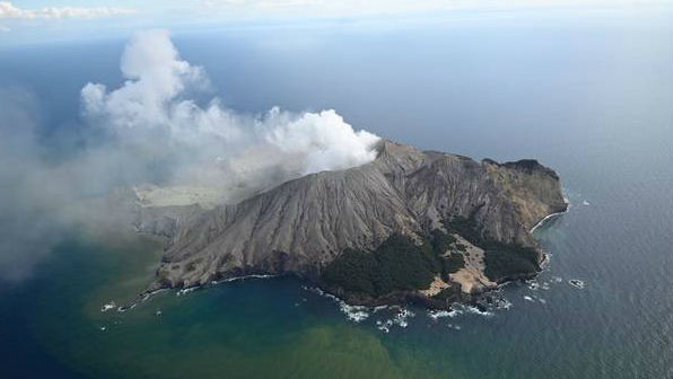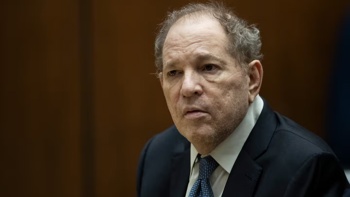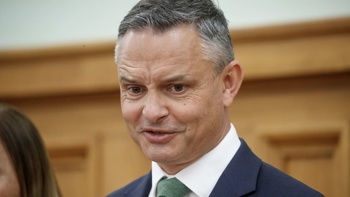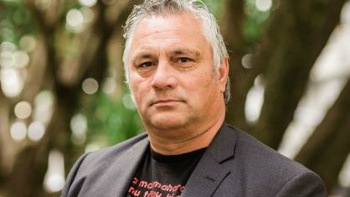
Preserving bodies, bracing for workplace investigations and preventing media leaks and misinformation.
These were just some of the challenges faced behind the scenes in Whakatāne in the aftermath of the Whakaari / White Island eruption on December 9. The death toll of the eruption stands at 21.
New information about how the situation unfolded has been revealed in a cache of documents released to NZME under the Official Information Act by the Whakatāne District Council and Bay of Plenty Regional Council.
White Island Tours, owned by Ngāti Awa Group Holdings Ltd, had 38 boat passengers and five crew on the island at 2.11pm, when the first eruption occurred, according to the Bay of Plenty Civil Defence Emergency Management Group's first situation report on December 9.
/arc-anglerfish-syd-prod-nzme.s3.amazonaws.com/public/OFYQT5D3GFF4LB6NSYX6POQHOM.jpg)
White Island aerial view after the volcanic eruption. Photo / File
The other people on the island were the pilot of a private helicopter and three passengers.
That eruption created an ash plume of about 12,000 feet and there were further eruptions at 4.30pm and 5.49pm that afternoon.
The Whakatāne Emergency Operations Centre was activated about 3pm to respond.
One Westpac Rescue Helicopter, two Kāhu NZ helicopters and one from Volcanic Air, all landed on the island after the eruption to help survivors, most of whom had burns and respiratory injuries.
Others were triaged on the boat Phoenix on its way to Whakatāne Wharf where a cordon and further triage and staging area was in place.
All known survivors were removed from the island within four hours of the eruption.
The first situation report at 5.15pm highlighted the need for a mortuary.
Bodies were initially kept at Willetts Funeral home but by 9pm a cool store was set up at Whakatāne Airport and "chiller units" were brought in from Tauranga.
A report at 4.20am on December 10 said 29 people, families and relatives of those affected from the Ovation of the Seas cruise ship berthed in Tauranga, were coming on two buses and accommodation for them was being organised.
Limiting factors likely to affect the effectiveness of the emergency response included "risk of passenger lists/numbers being 'leaked' to news sources and public prior to controller / police approval," the report said.
A plan made that day said "misinformation" about the number of people missing had been sent to media and another report said a Civil Defence liaison had been put on-board the cruise ship while ACC was distributing information for people affected.
The dead were taken to Auckland for body identification by NZ Police and Australian Police and ease of access for families.
/arc-anglerfish-syd-prod-nzme.s3.amazonaws.com/public/7WH76VNWLNFOJMYHGHM3XKPYU4.jpg)
Ambulances wait to receive patients at the Whakatāne Wharf after the volcanic eruption at White Island. Photo / File
Police would be taking DNA from "mortal remains" and would meet families of the dead at the airport, a welfare meeting was told.
On December 10, police told a media conference a criminal investigation was being launched. Later that evening police issued a retraction statement saying it was "too early" to confirm an investigation.
The documents said Ngāti Awa was "adversely affected by [the] erroneous police statement".
The Prime Minister also apologised, according to the new documents, and "reputational impact" of the police statements was mentioned in a subsequent situation report.
A stakeholders meeting for business owners, tourism organisations and local government was held at midday on December 12, and the WorkSafe investigation into the eruption was raised.
"At present, two of the White Island Tours boats have been quarantined," the minutes said.
/arc-anglerfish-syd-prod-nzme.s3.amazonaws.com/public/MZBVJBH7EBCGNNCIG6XJD3O65Y.jpg)
Police Superintendent Bruce Bird and Prime Minister Jacinda Ardern speak to media the morning after the eruption. Photo / File
White Island Tours has been an iconic tourism business in the eastern Bay of Plenty for about 30 years, bringing about 18,000 people to the district annually, according to 2018 estimates.
"Everyone in this room is severely affected. We will get heavily investigated by WorkSafe. It will take a long time before they get something together and it will be extensive. Please be aware of that.
"[It is] hard to get comments out of in terms of [the] direction they are going. [They] need to be robust in procedures going back to the island. Majority of the [stakeholder] group are receiving legal advice. A huge number of people are going to be involved."
Businesses said they were cancelling Whakaari visits as far as three months ahead, while others were changing itineraries.
A Whakatāne welfare centre offered face to face support from the Ministry of Social Development, the Ministry of Foreign Affairs and Trade, Red Cross, Victim Support, Pou Whakaaro mental health and disability support and the Salvation Army.
Te Puni Kokiri also worked with Te Rūnanga o Ngāti Awa to support affected whānau.
On December 13, Police and Red Cross shut down the 'Restoring Family Links' website - which was being used to help friends and family track down loved ones they feared caught up in the eruption - because it was "not delivering any further value and there have been some false registrations which have caused confusion."
A situation report that night said "a Whakaari/White Island family space" had been set up at Kings College in Auckland for those with loved ones in hospital nearby.
A reception area at Aotea Centre was also established for the families of the dead, during disaster victim identification.
The documents also revealed that an emergency management plan for Whakaari/White Island eruption had not been finalised when the volcano erupted.
/arc-anglerfish-syd-prod-nzme.s3.amazonaws.com/public/UTHD4HH3YFEYPGMXQE3RLS6FGA.jpg)
Prime Minister Jacinda Ardern hugs an ambulance staff member while meeting first responders in Whakatāne. Photo / File
The dead and injured
According to police there were 47 people on the island when it erupted.
There were 25 females and 22 males and their ages ranged from 14 to 72 years. There were five New Zealanders, 24 Australians, two from the United Kingdom, four Germans, nine Americans, two Chinese and one Malaysian/Australian.
The death toll stands at 21.
As of February 3, according to the Ministry of Health:
- Seven patients remain in hospital in New Zealand, one of whom is in a critical condition
- Four are in Middlemore Hospital, two in Waikato Hospital and one in Hutt Valley Hospital.
- Thirteen patients have been transferred to Australia and five further patients have been transferred to their home countries.
Take your Radio, Podcasts and Music with you









